The Independent's journalism is supported by our readers. When you purchase through links on our site, we may earn commission.
Atacama Desert, Chile: Exploring one of the world's most extreme environments
A holiday in one of the planet’s most inhospitable regions? Why not? Simon Parker braves the heat of the Atacama Desert in Chile
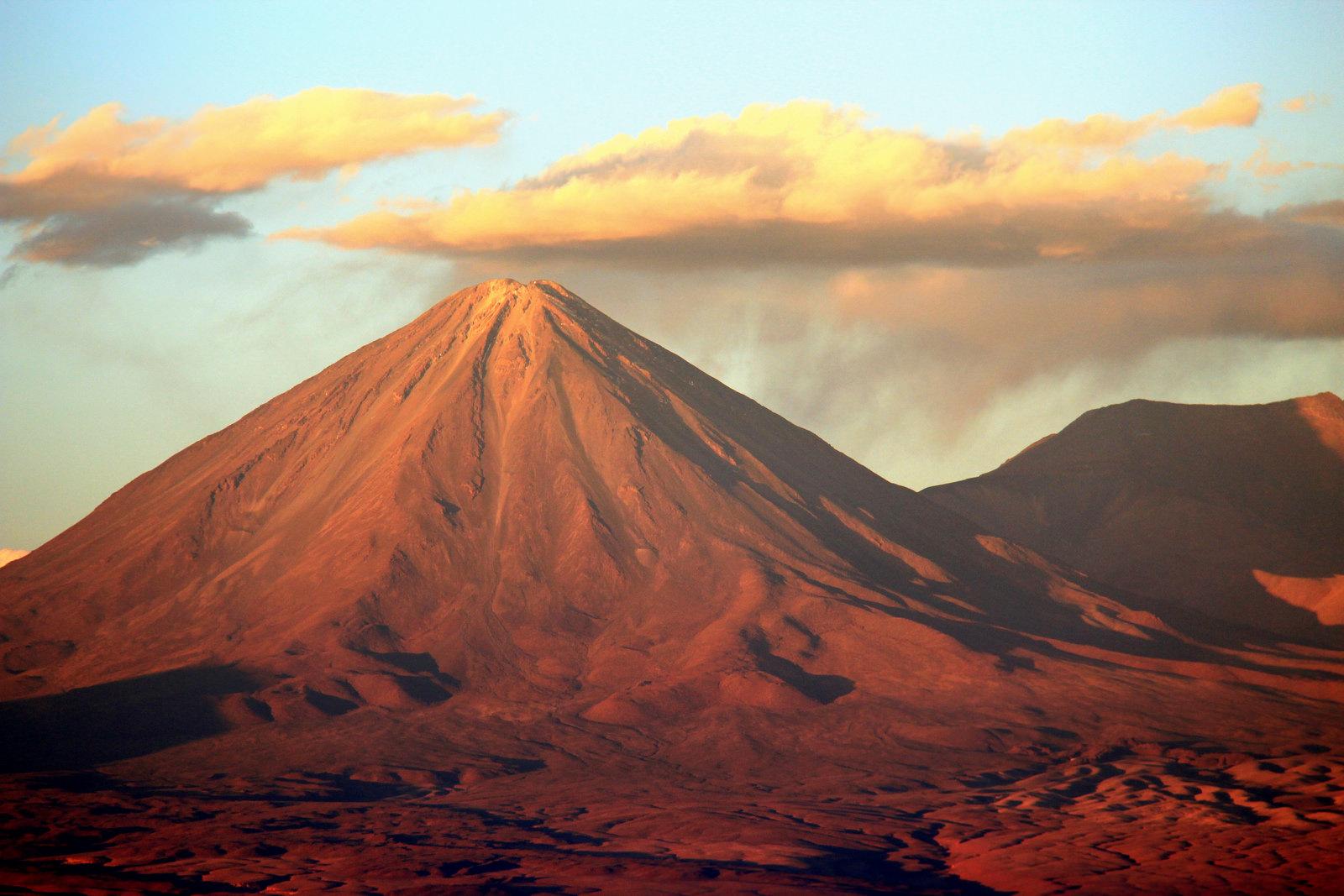
Your support helps us to tell the story
From reproductive rights to climate change to Big Tech, The Independent is on the ground when the story is developing. Whether it's investigating the financials of Elon Musk's pro-Trump PAC or producing our latest documentary, 'The A Word', which shines a light on the American women fighting for reproductive rights, we know how important it is to parse out the facts from the messaging.
At such a critical moment in US history, we need reporters on the ground. Your donation allows us to keep sending journalists to speak to both sides of the story.
The Independent is trusted by Americans across the entire political spectrum. And unlike many other quality news outlets, we choose not to lock Americans out of our reporting and analysis with paywalls. We believe quality journalism should be available to everyone, paid for by those who can afford it.
Your support makes all the difference.The world’s highest and driest desert – perfect for mountain biking. Or, er, not.
As I carved my way through Devil’s Canyon in Chile's Atacama – tyres kicking up floury crimson earth, eyes squeezed tight to block out intense, brilliant sunshine – a feeling of malaise suddenly seemed to wash through every oxygen-starved cell in my body.
I started wheezing in the thin air. My heart was racing at twice its resting beat and I felt a pins-and-needles sensation on the back of my neck – an early warning sign of impending altitude sickness.
See, the Atacama Desert may well be one of the planet’s most spectacular landscapes, but at 2,400 metres above sea level, it doesn’t half play havoc with the human constitution. And to cap it off, a fierce, incessant wind was driving deep into the pit of my brain.
Very little can survive in the Atacama Desert. In the most arid areas, no plant or animal life whatsoever is able to thrive. The climate here can swing up or down as much as 50C within a 24-hour period. No wonder my body was struggling to adapt.
And while I’ve experienced environments as inhospitable as the centre of the Pacific Ocean – as a novice sailor in the Clipper Round the World Yacht Race – and the dank interiors of the Amazon, the dry isolation of northern Chile felt like an entirely new and uncomfortable extreme.
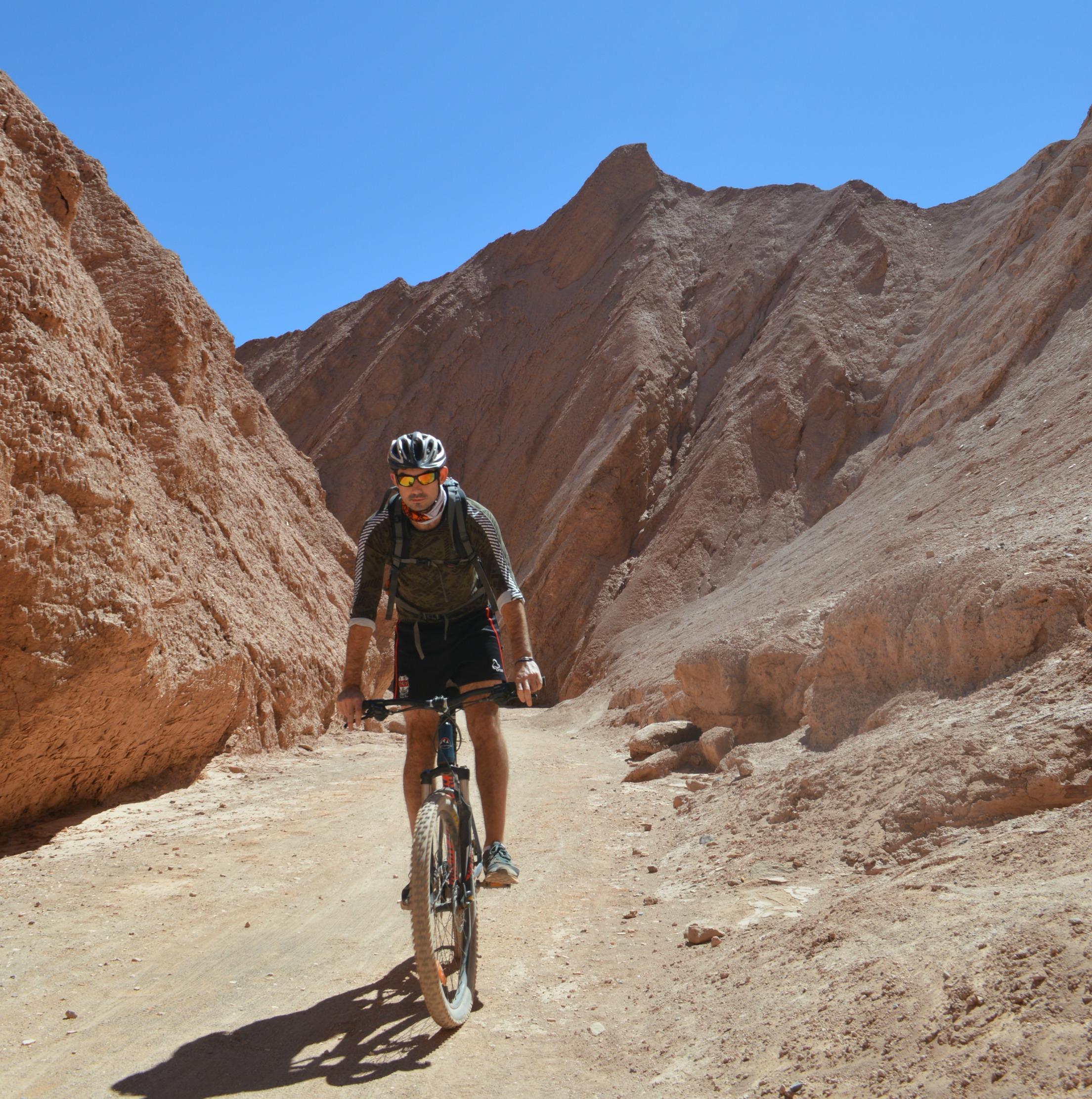
The Atacama’s position between the Andes and Chilean Coastal mountain ranges creates a death zone where, in one region of the desert, an average of just one measly millimetre of rain falls each year.
It’s astonishing that human beings feel compelled to visit such an inhospitable place – but for me, it’s precisely this distance from the comforts of normality that made the Atacama so appealing.
Strewn with volcanic rocks that were spewed out by the tectonically aggressive Andes between 30 and 50 million years ago, the Devil’s Canyon is easily one of the world's most extreme places to cycle.
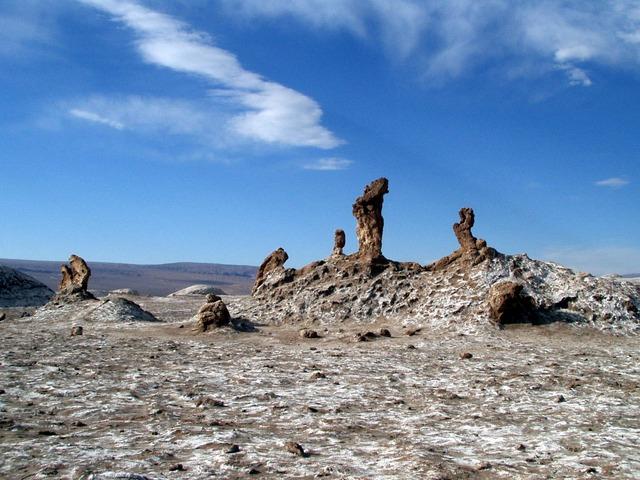
Still, I'm not sure I would try it again. In 2016, I cycled solo and unsupported across the United States in 48 days – often covering 150 miles in a single day. But in the Atacama I felt weak, dry and jaded – buckled by an environment that has little regard for human, plant or animal life.
Still, there's more to do in the Atacama than torture yourself.
At El Tatio geyser field, the Atacama becomes uncharacteristically moist. Rivers of magma below the nearby active Putana volcano heat chambers of water to 85C, which then appears at the surface in the form of bubbling cauldrons and steamy whirlpools.
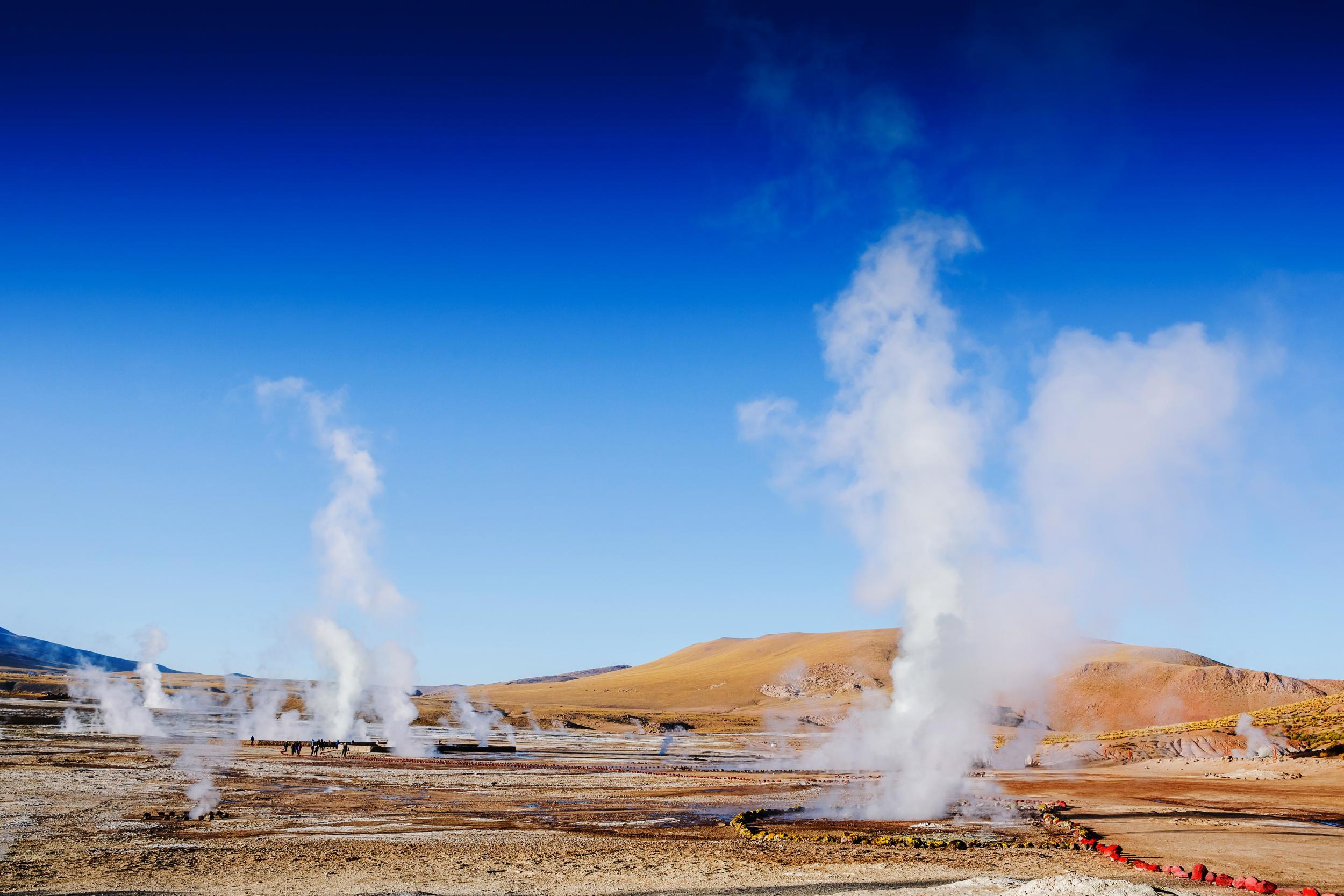
And it was here I realised I wasn't the only stupid person trying to take on the Atacama. Mischievous Andean gulls dive-bombed tourists toasting their dawn breakfast on gas burners nearby. Most of them were badly prepared for the sub-zero, early morning temperature, decked out in shorts and flip-flops. As if the Atacama wasn’t harsh enough.
For most visitors, El Tatio provides the morning warm-up act, while the nearby Atacama Salt Flat serves as the big-hitting main event.
Bolivia’s Salar de Uyuni may be bigger and cheaper to visit, but this part of the Atacama receives slightly more rain and wind. This creates a crispy, crazy paving of brackish puddles where regiments of elegant flamingoes tip-toe among their favourite foodstuff, the tiny brine shrimp.
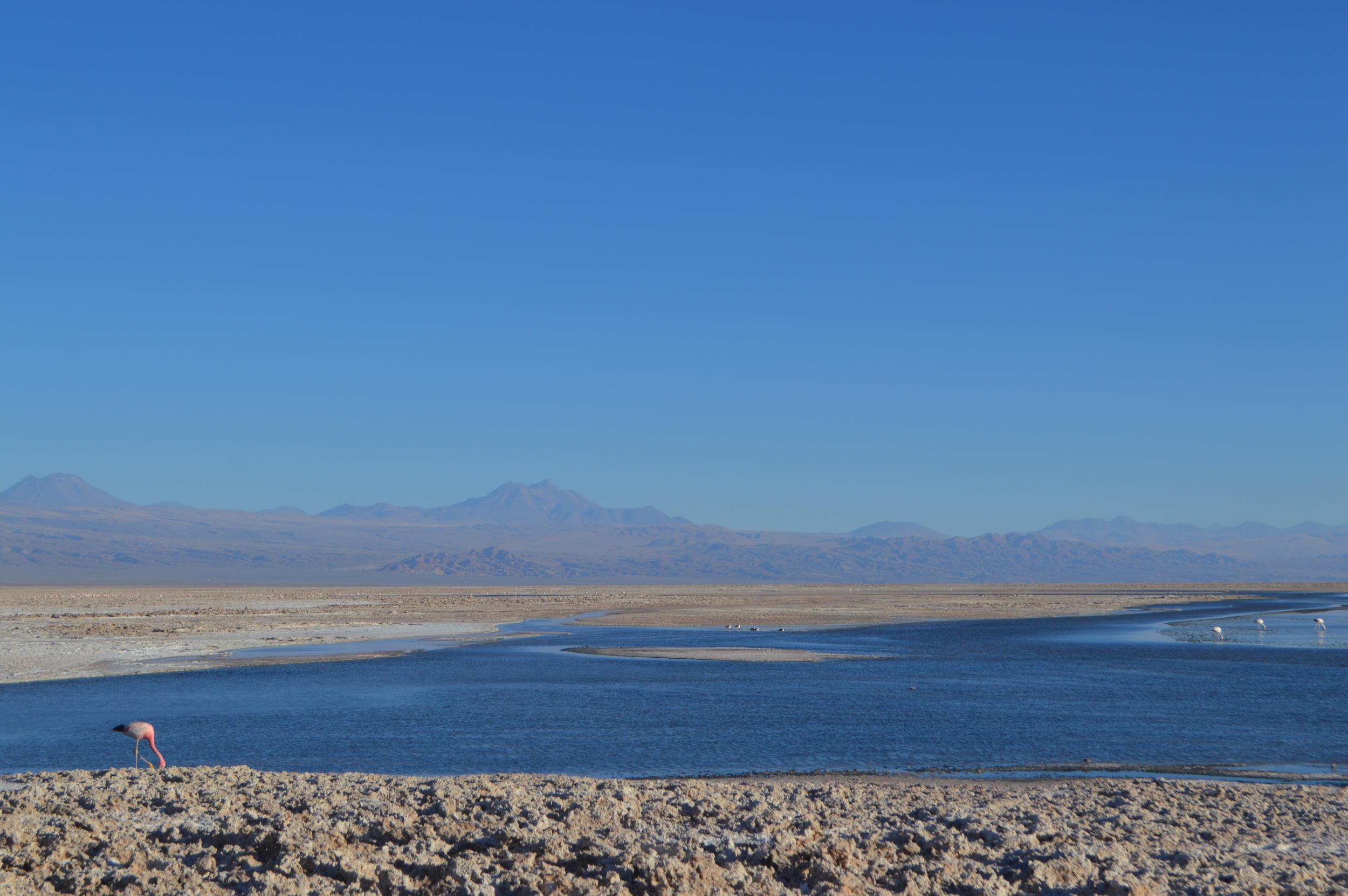
This 1,200-square-mile expanse of crusty sodium crystals transforms at sunset. And as it changed from fierce salty pearl and sapphire blue to an ethereal sepia, the growling white noise of wind dropped for the first time in days, leaving only breezy silence. It felt just like the centre of the Pacific in the eye of a storm. And as with the centre of the Pacific, there are many easier places to visit, but few that give such a rewarding payoff.
Fortunately, the grand finale of my Atacama adventure would be more sedate. The next morning, I took to the skies above the oasis town of San Pedro-de-Atacama aboard Chile’s latest tourist offering. For the first time ever it’s now possible to swoon over this epic landscape in a hot air balloon – and as the day’s first rays began to wash over our vast crimson canopy, I was seeing this dusty, isolated frontier from an entirely new and privileged vantage point.
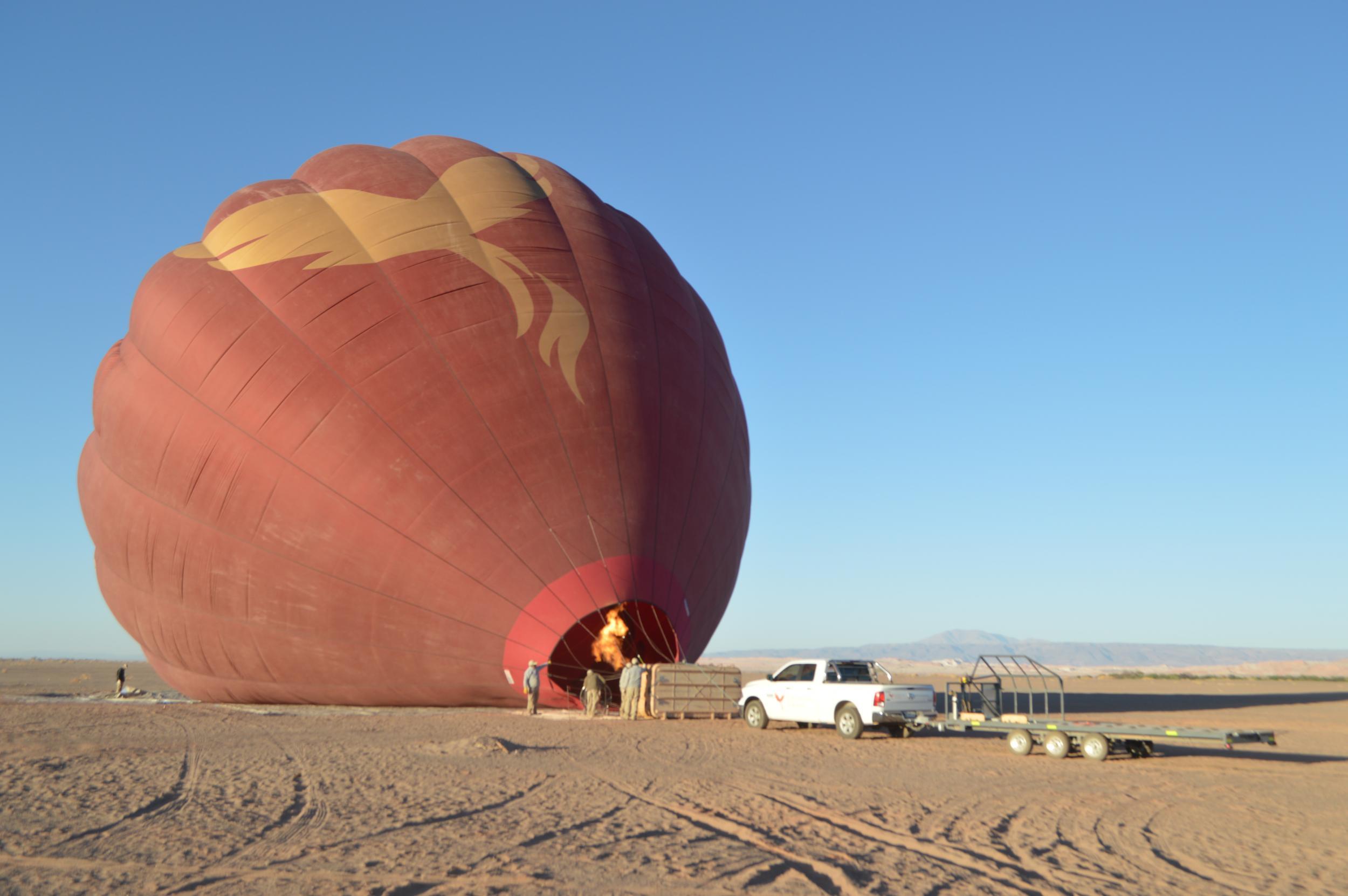
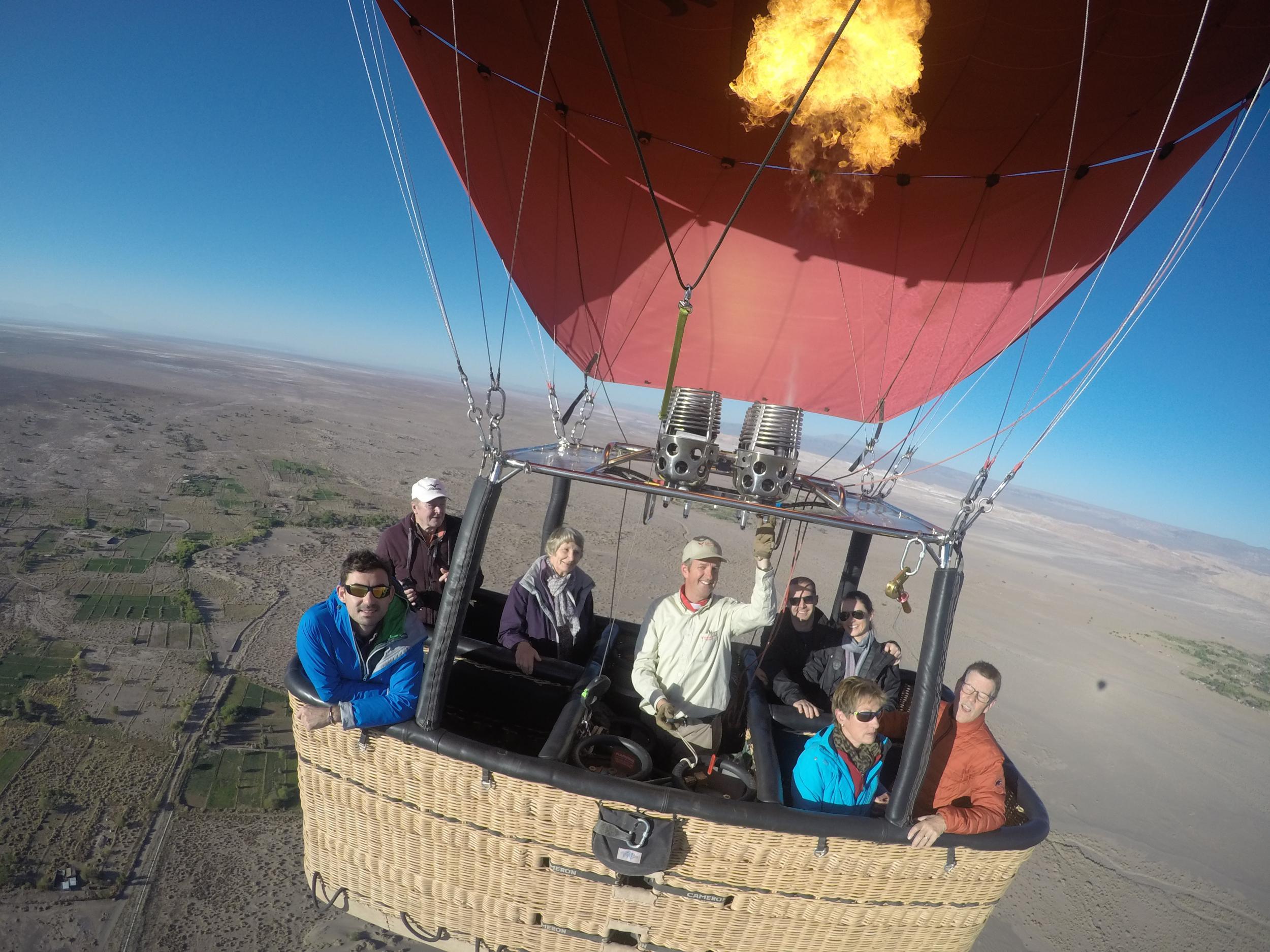
Below me, viaducts had been carved into the land like strands of black thread, syphoning precious water. Small groups of hardy emerald Chanyar trees had popped up among thickets of jade alfalfa. The remnants of a 15th-century Kunza settlement added intricate, stony detail to an otherwise auburn and khaki patchwork. From the open-top wicker basket, 500 metres above the ground and 3,000 metres above sea level, I felt a serene calm.
“I think we’re in for a true Atacama adventure this morning,” forecast our pilot, Barry, as he sent another ribbon of fire into the nylon chamber above our heads. “Because I have very little idea where we’ll end up. Now we’re at the will of the wind.”
It seems no matter what you do in the Atacama, the adventure finds you.
Travel essentials
Getting there
British Airways (ba.com) now flies a direct route from Heathrow to Santiago, with economy fares starting from £749 return. Internal flights between Santiago and the Atacama town of Calama are available with Latam (latam.com). From Calama, San Pedro, where Atacama excursions leave from, is a 90-minute drive away.
Staying there
Tierra Hotels (tierrahotels.com) offers a two-night adventure spa experience at Tierra Atacama from £1,208 per person. The price is based on two adults sharing a double en-suite room with a view towards the Licancabur volcano, private terrace and outdoor shower, on an all-inclusive basis. Includes transfers, all meals, open bar, a full excursion programme, and use of the hotel spa. (Spa treatments are charged separately.)
Hot-air ballooning there
Balloon flights with Balloons Over Atacama (easternsafaris.com) start from US$300 per person.
More information
Join our commenting forum
Join thought-provoking conversations, follow other Independent readers and see their replies
Comments